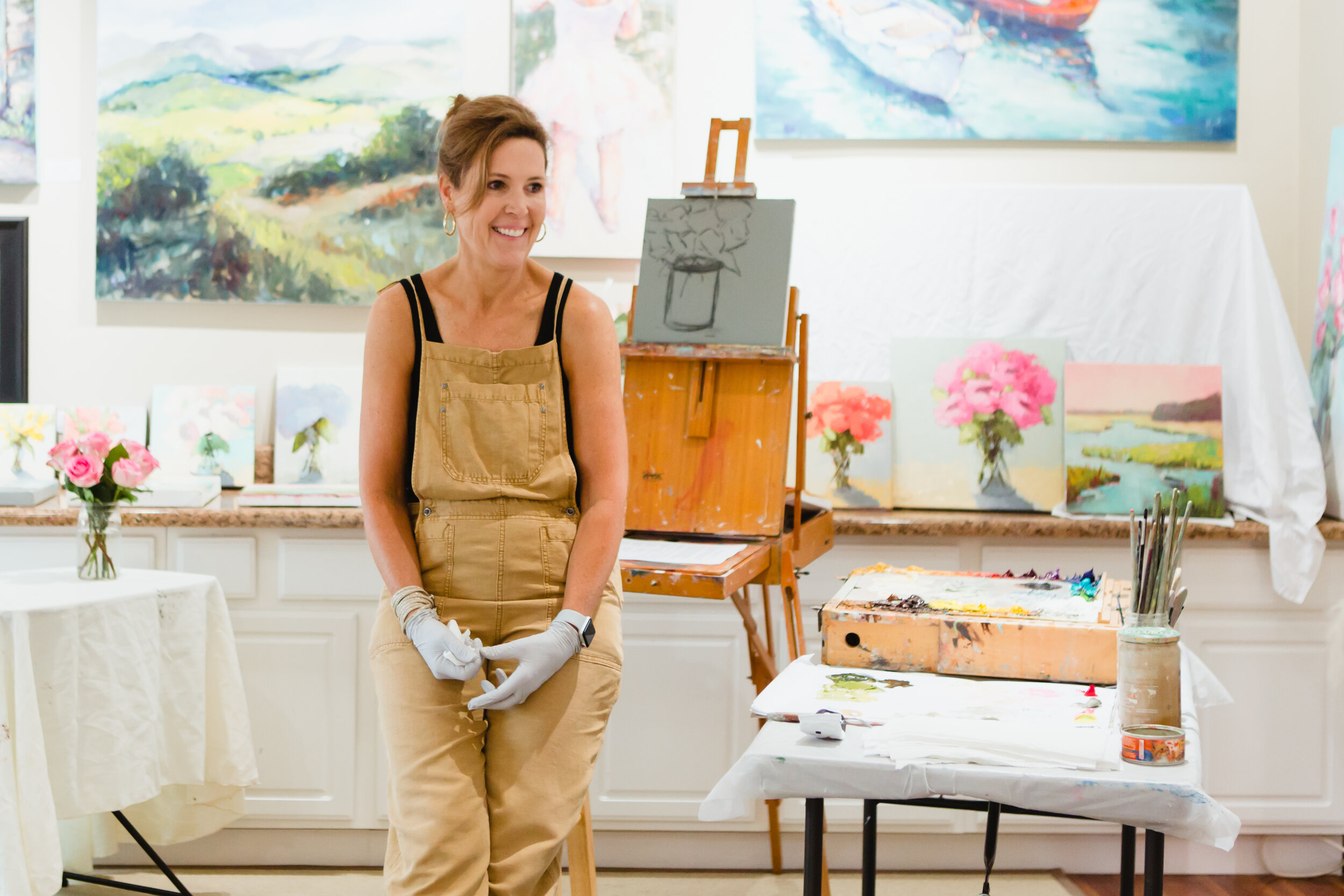Hi Friends,
I hope everyone is safe and healthy during this crazy time. I am grateful to be healthy and have been enjoying lots of time in the studio. I started my new Virtual Live Workshop about three weeks ago and I am loving it! The first 3 videos are available to replay on Facebook.
Here's What You Need to Know:
When:
Tuesday May 5th at 1:00pm. This will be session 4. Replays are available through my new Facebook Group, Angela's Color Story. I will be working on a Still Life, Oil and Acrylic Welcome!
Where:
Main Feed:
Facebook: Join my private group- Angela’s Color Story.
This is where all interaction will take place. All resources will also be posted here, not on Instagram.
Secondary Feed:
Instagram: @angelanesbitfineart
Let me know if you have any questions! Come Paint with Me!!
Best,
Angela
Your Marble Jar
There is a great metaphorical story in Brené Brown’s book Daring Greatly using a Marble Jar to build trust in relationships. She tells a great story of her daughter’s teacher who kept a jar in the classroom and each time the class did something positive a marble went in the jar. Conversely, when the class veered into the land of negatives, marbles were removed. When listening to this story I thought about my art. For all Creatives, the Marble Jar can represent all of our inspiration and creative ideas. We take from this jar daily as we head to the studio. All the ideas and energy we expend on all of our wonderful paintings deplete our jar. Not to mention all of our frustrations and self-doubt that join us from time to time. We do this day after day and wonder why we are burned out and our creativity has left the building at times. Then we go on a vacation or some other inspiring adventure and come back and most of the time our creativity and zest are back. Think of our time away from the easel as time to fill our Marble Jars but don’t wait until you are burned out and need a big vacation, do this regularly. There are so many ways to fill our jar. Overall, just do things you enjoy. Take time to slow down and recharge. I typically recharge best spending time outdoors. It is amazing how much more inspired you can be when you get back to the studio. Join us in my new Facebook Group for Creatives - Angela’s Color Story and share how you are keeping your Marble Jar full!
Honoring Spring With Mixing Green
In honor of St. Patrick’s Day and the Spring Equinox, I am doing a series of “How to Mix Green” videos. I start the series exploring St. Patrick’s Day Green, which is a bright spring green.
1. Spring Green - Cerulean & Cad Yellow Light - Phtalo Turquoise & Lemon Yellow
How do we decide which yellow and which blue to use for a Spring Green? Starting with the yellow, we look for a bright clean green, so the best yellow will lean towards green on the color wheel and are also considered cool yellows. A few cool yellow choices might be:
Lemon Yellow
Hansa Yellow
Cadmium Yellow Light or Pale
Our blue needs to be a nice clean blue that also leans towards green on the color wheel. A few green blues to choose from are:
Prussian
Cerulean
Phalo
Pthalo Turquoise
Turquoise
Of course if any of these greens have too much spring in them, then you can neutralize them by adding red (the compliment). I use Burnt Sienna a lot as my red to neutralize greens.
2. Mixing Greens Using Ultramarine Blue:
Mixing greens using Ultramarine Blue leans towards a more natural grayed down green by nature, because the Ultramarine Blue leans towards red with is the compliment of green.
In this video I use the following yellows to see what greens I get. Watch to see how different these greens are.
Cad Lemon
Cad Yellow Light
Cad Yellow Medium
Yellow Ochre
3. My Go To Greens
My palette tends towards more natural grayed down greens most of the time. These formulas are where I usually start and then I can manipulate them as needed depending on what I am painting. Note that I used Burnt Sienna by WInsor Newton specifically.
Light Natural Green: Ultramarine Blue + Cad Yellow Light + Burnt Sienna (a tad) + White
Mid-Tone Natural Green: Ultramarine Blue + Cad Yellow Medium + Burnt Sienna (a tad) + White
Dark Natural Green: Ultramarine Blue + Cad Yellow Deep + Burnt Sienna (a tad)
4. Tube Greens
I believe that everyone should be skilled at mixing and understanding greens from scratch before using tube greens. So, take some time to explore all your blue and yellow choices and make some color charts. I also understand having some short-cuts to speed up our mixing time. However, I am not willing to sacrifice the quality of the color. There are only a few Tube Greens I feel are as good or better than what I can mix.
Here are a few greens that I use regularly:
Cad Green Light - Williamsburg - A nice mid-tone spring green.
Olive Green - Winsor Newton - A luminous, transparent, very dark, grayed down green.
Cinnabar Green Light - Old Holland - Another beautiful spring green.
I hope everyone enjoyed this mixing series. Please email me with requests!
Stay healthy and safe,
Angela


